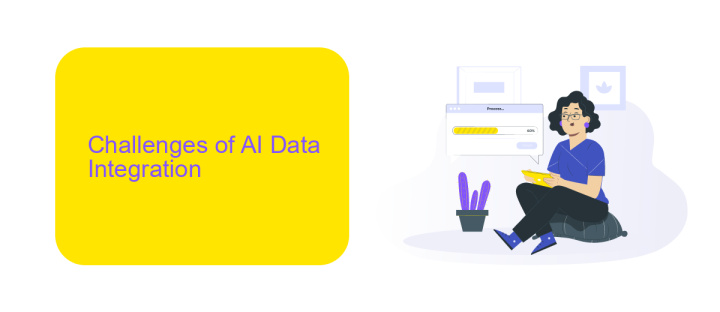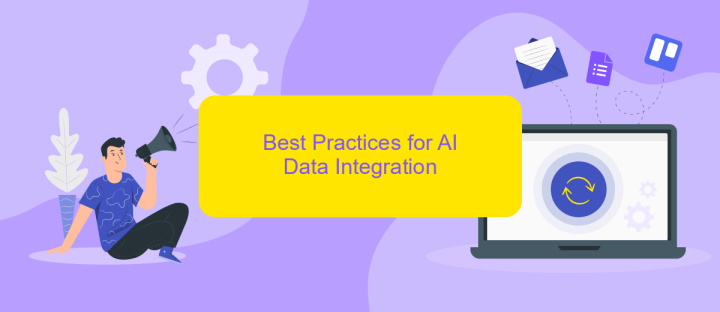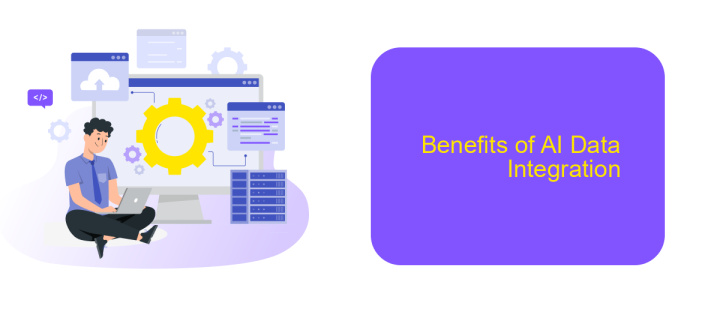AI Data Integration
In today's rapidly evolving technological landscape, AI data integration has emerged as a crucial component for businesses aiming to leverage artificial intelligence effectively. By seamlessly merging diverse data sources, AI data integration enables more accurate insights, streamlined operations, and enhanced decision-making processes. This article explores the key benefits, challenges, and strategies for successful AI data integration, providing a comprehensive guide for organizations looking to optimize their AI initiatives.
Introduction
Artificial Intelligence (AI) is revolutionizing the way data is integrated across various platforms, enhancing efficiency, and providing deeper insights. AI data integration involves the use of AI technologies to automate and optimize the process of consolidating data from diverse sources. This approach not only reduces manual effort but also minimizes errors and inconsistencies, leading to more reliable and timely information.
- Automated data mapping and transformation
- Real-time data synchronization
- Error detection and correction
- Enhanced data security and compliance
One of the leading services facilitating AI-driven data integration is ApiX-Drive. This platform allows users to seamlessly connect various applications and automate workflows without requiring extensive technical knowledge. By leveraging ApiX-Drive, businesses can ensure that their data is consistently up-to-date and readily available for analysis, ultimately driving better decision-making and operational efficiency.
Challenges of AI Data Integration

AI Data Integration poses numerous challenges, primarily due to the complexity and variety of data sources involved. One significant issue is data quality and consistency, as integrating data from disparate systems often results in discrepancies and errors. Ensuring that data is clean, accurate, and formatted uniformly is essential but can be labor-intensive and time-consuming. Additionally, managing the sheer volume of data generated by AI systems requires robust infrastructure and sophisticated tools to process and store information efficiently.
Another challenge is the interoperability between different data systems and platforms. Many organizations use a variety of software solutions that may not be inherently compatible, making seamless data integration difficult. Services like ApiX-Drive can help mitigate these issues by providing automated data integration solutions that streamline the process and reduce manual intervention. Moreover, data security and privacy concerns are paramount, as integrating sensitive information across multiple platforms increases the risk of breaches. Implementing strong encryption and access controls is crucial to safeguarding data integrity.
Best Practices for AI Data Integration

Integrating AI data effectively requires a strategic approach to ensure seamless data flow and accuracy. To achieve optimal results, consider the following best practices:
- Define Clear Objectives: Establish specific goals for your AI data integration project to guide the integration process and measure success.
- Ensure Data Quality: Clean and preprocess data to eliminate inaccuracies and inconsistencies, ensuring reliable AI outcomes.
- Utilize Scalable Tools: Choose integration tools like ApiX-Drive that support scalability and can handle increasing data volumes efficiently.
- Maintain Data Security: Implement robust security measures to protect sensitive data during integration, including encryption and access controls.
- Monitor and Optimize: Continuously monitor the integration process and make necessary adjustments to improve performance and accuracy.
By following these best practices, organizations can enhance their AI data integration efforts, leading to more accurate insights and better decision-making. Tools like ApiX-Drive can simplify the integration process, offering automated workflows and real-time data synchronization to streamline operations.
Benefits of AI Data Integration

AI Data Integration offers numerous advantages for businesses aiming to streamline their data management processes. By leveraging artificial intelligence, companies can automate the collection, transformation, and analysis of data from various sources, leading to more efficient and accurate decision-making.
One of the primary benefits of AI Data Integration is the reduction of manual effort. Traditional data integration methods often require significant human intervention, which can be time-consuming and prone to errors. AI-driven solutions, such as ApiX-Drive, can automate these tasks, ensuring that data is consistently accurate and up-to-date.
- Enhanced data accuracy and consistency
- Reduced operational costs
- Faster data processing and analysis
- Improved decision-making capabilities
- Scalability to handle large volumes of data
Moreover, AI Data Integration enables businesses to integrate data from disparate sources seamlessly. Tools like ApiX-Drive facilitate the connection between various applications and databases, making it easier to unify data and gain comprehensive insights. This holistic view of data empowers organizations to make informed decisions and stay competitive in their respective markets.


Future of AI Data Integration
The future of AI data integration is poised to revolutionize how businesses handle and interpret their data. As AI algorithms become more sophisticated, the ability to seamlessly integrate disparate data sources will become crucial for gaining actionable insights. Advanced machine learning models will enable real-time data processing, providing organizations with the agility to respond to market changes swiftly. Moreover, the integration process will become more automated, reducing the need for manual intervention and minimizing the risk of human error.
Platforms like ApiX-Drive are at the forefront of this transformation, offering tools that simplify the integration of various data sources. By leveraging such services, businesses can streamline their workflows and ensure that their data is consistently accurate and up-to-date. ApiX-Drive’s user-friendly interface and robust automation capabilities make it easier for organizations to set up and manage integrations without extensive technical expertise. As AI continues to evolve, the synergy between advanced data integration tools and AI will unlock new levels of efficiency and innovation.
FAQ
What is AI Data Integration?
Why is AI Data Integration important?
What are the common challenges in AI Data Integration?
How can I automate the AI Data Integration process?
What are the benefits of using a platform for AI Data Integration?
Time is the most valuable resource for business today. Almost half of it is wasted on routine tasks. Your employees are constantly forced to perform monotonous tasks that are difficult to classify as important and specialized. You can leave everything as it is by hiring additional employees, or you can automate most of the business processes using the ApiX-Drive online connector to get rid of unnecessary time and money expenses once and for all. The choice is yours!

